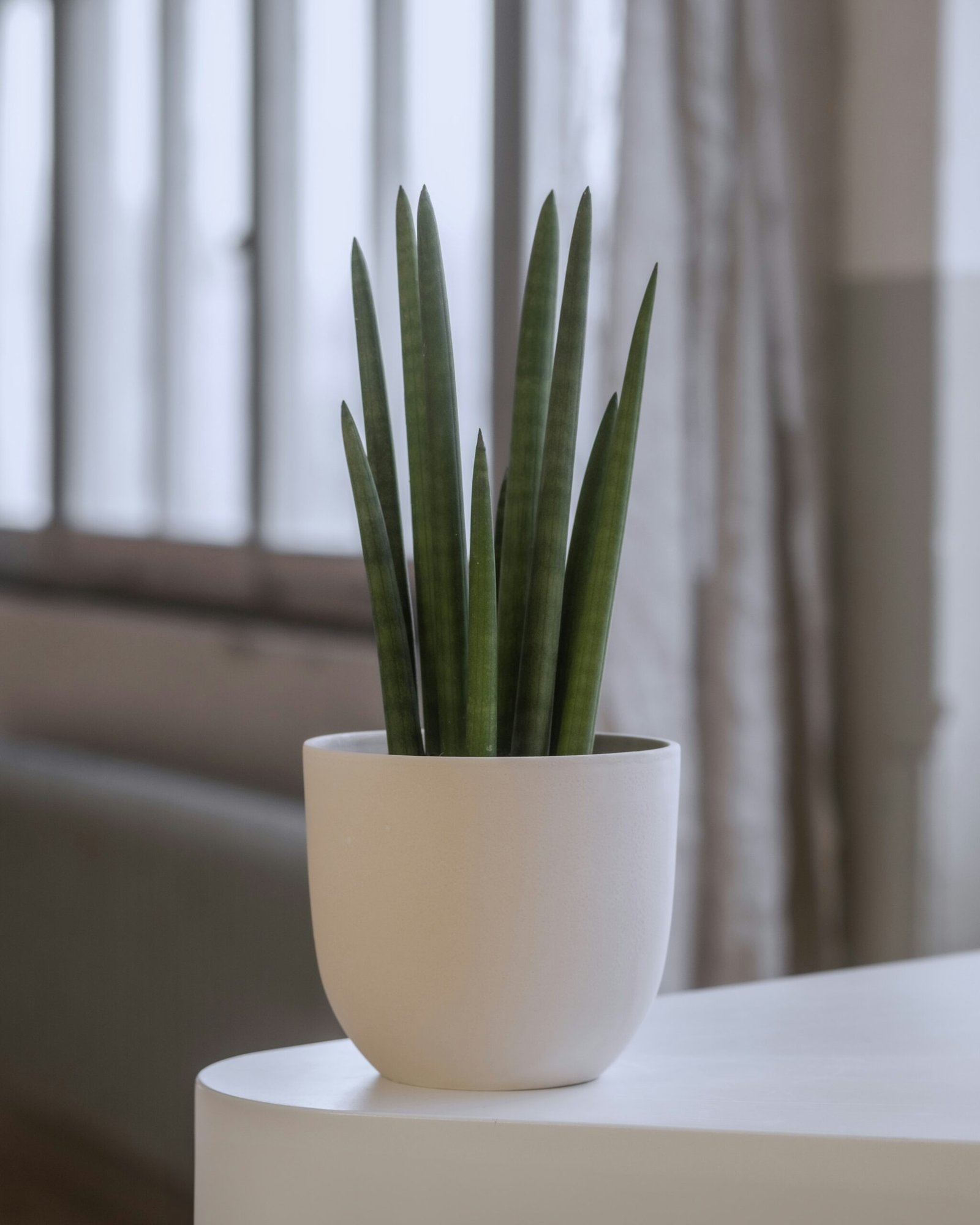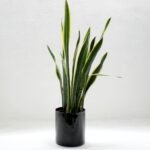Understanding the Snake Plant
The snake plant, scientifically known as Sansevieria, is a strikingly resilient indoor plant celebrated for its distinctive upright leaves and architectural form. This popular houseplant features long, sword-like leaves that can vary in color from rich green to yellow margins, giving it an aesthetically pleasing appearance. Some common varieties include the Sansevieria trifasciata, mostly recognized for its tall, variegated leaves, and the Sansevieria cylindrica, known for its cylindrical growth pattern. Each of these varieties contributes unique visual interest to any interior space.
One of the primary reasons that snake plants are favored by indoor plant enthusiasts is their remarkable low maintenance requirements. They can thrive in a variety of environments, making them an excellent choice for both novice and seasoned plant keepers. Snake plants are particularly renowned for their ability to survive in low light conditions, although they can also flourish in bright, indirect sunlight. This adaptability is rooted in their natural habitat, as they are native to arid regions of Africa, where they developed the ability to conserve water and endure harsh conditions.
Moreover, snake plants possess exceptional air-purifying qualities. They are known to filter out common toxins such as formaldehyde, xylene, and toluene, improving indoor air quality. This not only makes them a beautiful addition to any home but also contributes to a healthier living environment. Their unique capacity to convert carbon dioxide into oxygen at night distinguishes them from many other houseplants, allowing homeowners to enjoy fresh air even while they sleep. Overall, the snake plant’s appealing characteristics, coupled with its hardy nature and beneficial qualities, underscore its status as a beloved indoor plant choice.
Ideal Lighting Conditions for Snake Plants
Snake plants, also known as Sansevieria, are resilient houseplants that can thrive under various lighting conditions. Understanding their specific lighting requirements is crucial for their optimal growth and health. These adaptable plants can successfully flourish in environments ranging from bright, indirect light to low-light situations. However, it is essential to recognize the differences between these light conditions to provide the best care possible.
Direct sunlight, particularly in the afternoon hours, can be detrimental to snake plants. Prolonged exposure to harsh sunlight can lead to leaf burn, causing the leaves to develop brown tips and patches. While snake plants can tolerate some direct sunlight in the morning, it is advisable to position them in areas where they can receive filtered light for most of the day. For instance, placing a snake plant near a window with sheer curtains can create an ideal environment that protects the leaves from excessive heat while still providing adequate light.
In contrast, indirect light is considered the sweet spot for snake plants. This type of light occurs when sunlight is diffused, allowing for a gentle glow that is not overwhelming. Areas with plenty of natural light, such as a well-lit living room or a corner with bright, filtered light, are perfect for snake plants. They can flourish effectively when placed in such conditions, showcasing their characteristic upright leaves and maintaining their vibrant green colors.
Moreover, snake plants are known for their ability to adapt to low-light environments. While they may grow slower in dimmer spaces, their resilience allows them to survive with minimal illumination. Indicators of insufficient light include elongated leaves and a gradual decline in color vibrancy. To ensure their well-being, it is essential to monitor their growth and consider moving them to a brighter location if these signs appear.
Best Indoor Locations for Snake Plants
Choosing the right indoor locations for snake plants is essential for their health and growth. These hardy plants thrive in various lighting conditions, making them suitable for multiple spaces within a home or office. Here are some of the best spots to place your snake plants, taking into consideration light availability, temperature, and humidity.
One popular location is the living room. Due to its central position in many homes, the living room offers ample light. Snake plants can thrive in both bright, indirect sunlight and low light conditions, which makes this area ideal. Placing snake plants near a window can enhance aesthetic appeal while still providing the necessary light. Ensure the temperature remains consistent, ideally between 60-80°F (15-27°C), to promote optimal growth.
The bedroom is another excellent choice. Snake plants not only purify the air but also contribute to a serene atmosphere. They can adapt to low light, so consider placing them on bedside tables or shelves where they will receive indirect sunlight. The humidity in a typical bedroom is often comfortable for snake plants, which prefer moderate moisture.
For those working from home, placing snake plants in an office can be beneficial. They have a reputation for improving air quality and reducing stress levels. Locate your plants on desks or window sills to ensure they receive sufficient light during the day. Additionally, maintaining a comfortable temperature, free from drafts, supports their growth.
Finally, the bathroom can be a unique space for snake plants as they tend to thrive in higher humidity. Placing them near the window may provide sufficient light for indoor growth. When decorating, consider incorporating snake plants alongside other green decor to create a vibrant atmosphere while ensuring that their arrangement complements existing furniture.
Ultimately, strategically positioning snake plants in these key indoor locations maximizes their potential for healthy growth while enhancing the overall interior decor. By considering factors like light and humidity, you can create a thriving environment for your plants that adds beauty to your space.
Caring for Snake Plants in Various Light Conditions
Snake plants, also known as Sansevieria, exhibit a remarkable ability to adapt to different lighting conditions, making them a popular choice for indoor gardening. However, the degree of success in caring for these plants largely hinges on understanding and responding to the specific light environments in which they are placed. For optimal growth, it is crucial to tailor a care routine that aligns with these varying conditions.
In bright, indirect light, snake plants thrive and demonstrate robust growth. During this period, a regular watering schedule is recommended, allowing the top inch of soil to dry out before the next watering. This prevents root rot and ensures that the plant receives adequate moisture without becoming waterlogged. Fertilizing every four to six weeks during the growing season with a balanced, water-soluble fertilizer can also promote vibrant foliage and overall health.
When placed in low light conditions, snake plants are surprisingly resilient but may exhibit slower growth. In this scenario, it is advisable to reduce watering frequency as the plants require less moisture in dimmer environments. Watering should occur only when the soil feels completely dry to the touch. Fertilization should be minimized during this period, potentially limiting it to once or twice a year. To support adaptation, consider rotating the plant occasionally to ensure even exposure to available light.
It is important to be vigilant for potential challenges, such as yellowing leaves, which can indicate overwatering, especially in less-than-ideal lighting scenarios. If you observe this sign, allow the soil to become drier between waterings. Conversely, if the leaves appear leggy or the plant seems to lack vigor, it might need more light. By understanding the distinct needs of snake plants in various light conditions, caregivers can create an optimal environment that fosters healthy growth and vitality.





